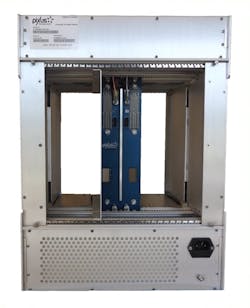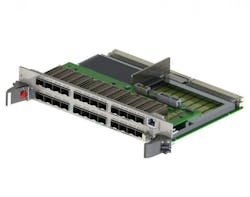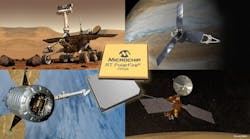Latest embedded systems technologies for defense applications
The military relies on its massive defense budget to ensure it has access to the latest technologies that rely on embedded systems to function. Like any other platform in the military, those systems need to be rugged enough to handle operating in harsh environments while maintaining a level of stability without fail.
These often have different hardware standards over commercial offerings and need to adapt over time as applications continue to evolve. Below we will take a look at some of the latest embedded systems for defense applications that are designed to handle those extreme environments, and what they have to offer.
The latest version of the VPXD1000 features a 63HP (12.6-inch) full size, which allows for higher slot count backplanes (up to 10X slots) at a 1.0-inch pitch. Moreover, designers can utilize one portion of the chassis for a smaller VITA 67 backplane over OpenVPX, as well as a separate segment for housing RF platforms or other devices. The chassis now has removable sidewalls for easy open-frame access, and airflow and cooling can be optimized based on the customers’ requirements.
That 10G functionality allows the platform to be used as an aggregator of multiple video/sensor data streams that can be sent via one or more 10G uplinks to other systems, including data servers and mission computers.
The Dual I/O version of the NETernity GBX25 features up to 40 switched ports (24 rear VME ports/16 front panel ports) and offers a myriad of port types, including 10/100/1000BaseT, 100BaseFX, 10GBase-T, Front I/O: SFP+, 10GBase-SR, 10GBase-LR, and 1000Base-SX.
The PolarFire series features high-speed serial connectivity with built-in multi-gigabit/multi-protocol transceivers from 250Mbps to 12.7Gbps, up to 481K logic elements consisting of a four-input look-up table (LUT) with a fracture-able D-type flip-flop, and supports up to 1600Mbps DDR4, 1333Mbps DDR3L and 1333Mbps LPDDR3/DDR3 memories with integrated I/O gearing. The FPGA also packs up to 1480 18 x 18 multiply-accumulate blocks with hardened pre-adders and integrated dual PCIe for up to x4 Gen2 endpoint (EP) and root port (RP) designs.
The NavChip Series 3 IMUs feature a full-scale acceleration range of +/- 16g and a full-scale angular rate of 2,000 degrees/sec and has an angular random walk of 0.18°/√hour, a velocity random walk of 0.03𝑚/𝑠/√hour and a hugely quiet acceleration noise performance of better than 83 μ𝑔/√𝐻z.
Performance features include Advanced Global Wear Leveling, Page Mode FW architecture technology, Dynamic Data Refresh and AutoRefresh to maintain data integrity and Early Retirement technology to prevent data loss from weak blocks. It also features SPOR (Sudden Power-Off Recovery), which backs up the firmware in the event of power loss.
As embedded technology continues to move forward for defense applications, the continuing trend among manufacturers to maintain breaks down into two categories- more exceptional capabilities, and a high degree of robustness to maintain reliability and functionality. One break in the system and the applications fails, so it will be interesting to see what the ever-evolving embedded platforms will emerge over the next year and into the future.





